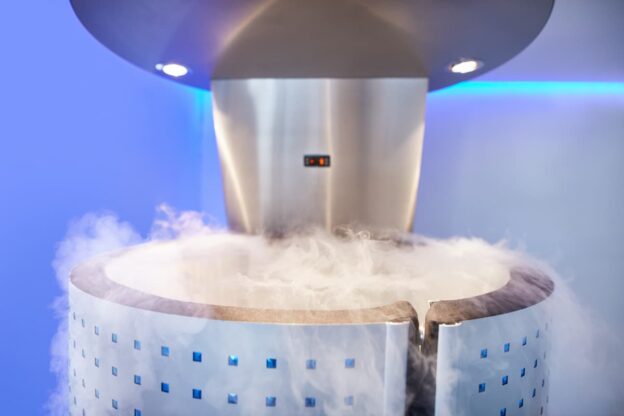The use of cold chambers in sport and fitness-Cold chambers, also known as cryotherapy, are becoming increasingly popular in the sports and fitness world. This technique is based on exposing the body to extremely low temperatures, usually between -85°C and -160°C, for short periods of time, usually no longer than 3 minutes. Here are some applications of cold chambers in sports and fitness:
Post-exercise recovery: cold chambers are often used after intense training sessions or competitions to speed up recovery. The cold can help reduce inflammation, soothe sore muscles and promote muscle recovery.
Pain relief: The cold in the cold chamber can help relieve pain, especially from sports injuries or chronic pain. It can promote the release of endorphins, the body’s natural painkillers.
Performance enhancement: Some athletes use cold chambers to enhance their performance. By reducing muscle fatigue and improving blood flow, they may be able to train longer and more intensely.
Reducing inflammation: Cryotherapy can help to reduce inflammation, which can be of great benefit in sports medicine and injury rehabilitation.
Improving sleep quality: Some people report better sleep after cold chamber treatments, which is particularly important for athletes and fitness enthusiasts, as adequate sleep is crucial for recovery and performance.
The use of cold chambers in sport and fitness
It is important to note that cold chambers are not without risks. Exposure to extremely low temperatures can lead to frostbite, skin irritation and other side effects, especially if not done properly. Therefore, cold chambers should always be supervised by trained personnel and it is advisable to consult a doctor before use, especially if you have any pre-existing medical conditions or health problems.
The use of cold chambers in sports and fitness is an area that continues to be researched, and there is still much to learn about their long-term effects and best practices. Athletes and fitness enthusiasts should be aware of this and make informed decisions if they wish to incorporate this technique into their training regime.






